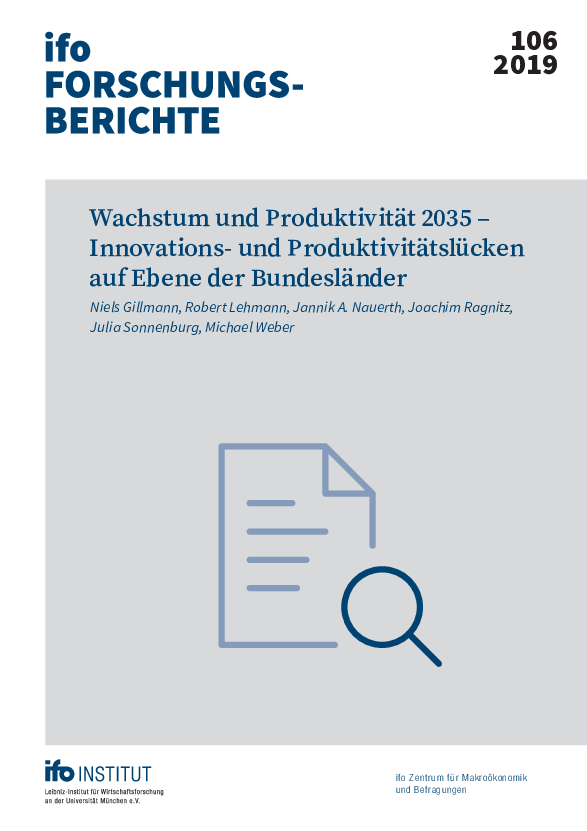Wachstum und Produktivität 2035 – Innovations- und Produktivitätslücken auf Ebene der Bundesländer
ifo Institut, München, 2019
ifo Forschungsberichte / 106

This study projects economic growth paths of German federal states (“Länder”) up to 2035 against the background of likely future developments, such as those in productivity growth and demographic trends. Starting with a baseline scenario, the study develops four alternative scenarios, which set specific objectives for the standard of living (gross domestic product (GDP) per inhabitant) and for future labor productivity (GDP per employed person). However, these objectives are set to derive possible conclusions for today’s economic policy.
In the baseline scenario, economic growth in the projection period will decline noticeably compared to the recent past: Real GDP growth (potential growth rate) will fall to around 0.6 percent in 2035, more than halving compared with the current level. The standard of living and labor productivity will also grow more slowly in the future. The main driver here is demographic change, which will become increasingly apparent at the end of the projection period.
According to the projections, the structurally weak states of Mecklenburg-Western Pomerania, Saarland and Saxony-Anhalt are likely to be particularly hard hit. Due to the difficult demographic framework conditions, economic growth in these three federal states is likely to be even negative at the end of the projection period. On the other hand, there are structurally strong federal states such as Baden-Württemberg, Bavaria or the city states of Berlin and Hamburg; these four federal states are likely to show the highest economic growth in the next 20 years (of around 1.1% on average).